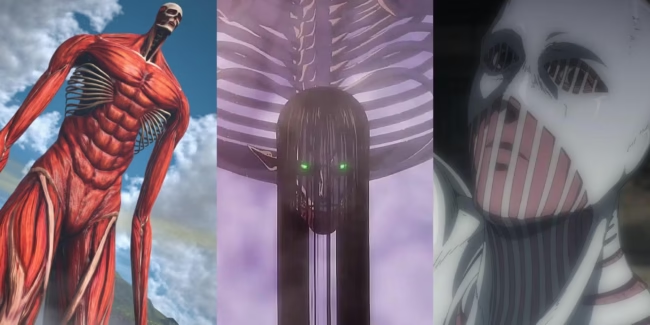The concept of the “Huge Titan” has captured the imagination of humanity for millennia, appearing in myths, nature, science, and culture. Titans are
The concept of the “Huge Titan” has captured the imagination of humanity for millennia, appearing in myths, nature, science, and culture. Titans are synonymous with gigantic scale, immense strength, and enduring presence. Whether as ancient mythological beings, gigantic creatures of the natural world, or symbols in modern storytelling, Huge Titans symbolize forces larger than life itself.
This article explores the multifaceted nature of Huge Titans, looking at their origins, representations, and the reasons why these towering figures remain an enduring part of human culture and understanding.
Titans in Mythology: Origins of the Giant Beings
The earliest and most iconic image of Titans comes from ancient Greek mythology. These gigantic deities were central figures in stories about the creation and early order of the universe.
Who Were the Titans?
The Titans were the children of Gaia (Earth) and Uranus (Sky) and were among the first gods to rule the cosmos. They personified fundamental forces — Cronus represented time, Oceanus the ocean, and Hyperion the sun. These colossal beings were so powerful that their reign was known as the “Golden Age,” a time of peace and prosperity.
The Titanomachy: Clash of Giants
The famous Titanomachy, or battle of the Titans, was a monumental war between the Titans and the Olympian gods, led by Zeus. This myth symbolized the transition from old to new, chaos to order. The defeat of the Titans and their imprisonment beneath the earth symbolized the triumph of civilization and the establishment of cosmic law.
Titans Beyond Greece
The idea of giant beings is not exclusive to Greek mythology. Norse mythology speaks of Jotnar (giants), Hindu mythology has Asuras, and many cultures have stories of enormous, god-like figures. This universal theme highlights humanity’s fascination with vast power and primordial forces.

Huge Titans in the Natural World: Nature’s Giants
The term “Huge Titan” is equally applicable when we consider the natural world’s largest and most powerful living things and geological formations.
Giants of the Forest
Giant sequoias and coast redwoods represent the might of nature’s growth. The General Sherman Tree in California is one of the largest living organisms on Earth by volume, standing over 275 feet tall and thousands of years old. These trees are natural Titans, towering silently and enduring through centuries.
Massive Animals
The blue whale is the undisputed Titan of the animal kingdom, reaching lengths of nearly 100 feet and weights of over 200 tons. Its size makes it the largest animal to have ever lived. Other extinct Titans like the Argentinosaurus or Spinosaurus were among the largest land creatures ever, inspiring awe with their massive skeletal remains.
Geological Titans: Mountains and Ice
Mountains like Everest and volcanic giants like Mauna Loa are natural Titans carved by tectonic activity. Icebergs the size of cities drift through oceans, reminding us of the immense and sometimes fragile power of nature.
Huge Titans in Science and Space Exploration
The fascination with Huge Titans extends beyond Earth and into the vast reaches of space.
Titan, Saturn’s Largest Moon
Titan is the second-largest moon in our solar system and the only one with a dense atmosphere. Its surface is covered with lakes of methane and ethane, making it one of the most Earth-like worlds in terms of surface liquids. It’s a literal Huge Titan orbiting a gas giant, intriguing scientists who study its complex chemistry and potential for life.
Gas Giants and Beyond
Planets like Jupiter and Saturn are Titans in their own right — massive spheres of gas with gravitational forces strong enough to hold dozens of moons. Stars, neutron stars, and black holes represent Titans on an even grander cosmic scale, influencing galaxies and space-time itself.
Titans in Modern Culture: Giants of Imagination
In contemporary culture, Titans have become symbols of grandeur, conflict, and mystery.
Anime and Film
The anime Attack on Titan features massive humanoid Titans that evoke fear and mystery, capturing the imagination with their destructive power and tragic origins. Hollywood films such as Clash of the Titans bring mythological Titans to life with epic battles and storytelling.
Literature and Gaming
Fantasy novels often use Titans as ancient gods or massive creatures shaping the fate of worlds. Video games frequently portray Titans as epic boss battles or colossal allies, enhancing the sense of scale and adventure.
Symbolism and Metaphor of Huge Titans
The idea of a Huge Titan transcends physical size and enters the realm of metaphor.
Power and Authority
Calling someone a Titan of industry or a Titan in sports is a way to signify unmatched strength, influence, and leadership.
Challenges and Obstacles
The phrase “facing a Titan” can mean confronting an overwhelming challenge or obstacle, emphasizing the magnitude of what must be overcome.
Legacy and Endurance
Titans symbolize longevity and lasting impact, whether as ancient mythic figures, ancient trees, or monumental achievements.
Why Do Huge Titans Continue to Captivate Us?
Humans are drawn to extremes — size, strength, mystery — and Titans embody all these qualities.
- Awe: Huge Titans inspire wonder because they exceed normal experience.
- Fear: They remind us of our limits and the power beyond human control.
- Inspiration: Titans challenge us to imagine greatness and to overcome obstacles.
Frequently Asked Questions (FAQs)
What is the meaning of “Titan”?
Originally, a Titan is a giant god from Greek mythology. Today, it means anything very large, powerful, or influential.
Are Titans real creatures?
Mythological Titans are fictional, but the term describes real giant animals, trees, mountains, or even celestial bodies.
What is the largest Titan in the animal kingdom?
The blue whale is the largest living Titan in the animal kingdom.
Why do Titans feature so prominently in stories?
Titans represent universal themes like power, conflict, and transformation, which resonate deeply with human experience.
What makes Saturn’s moon Titan special?
Titan has a dense atmosphere and liquid lakes of methane, making it unique and interesting for studying potential life.
How is “Titan” used in everyday language?
It describes people or organizations with immense power or influence, such as “a titan of industry.”
Why do people fear Titans?
Because of their overwhelming size and strength, Titans evoke fear of the unknown and uncontrollable forces.
The legend of Huge Titans, whether in ancient myths, nature’s giants, or space’s celestial behemoths, continues to inspire awe and wonder. These colossal figures challenge us to understand the vastness of the world and universe, reminding us of the power that exists beyond human scale
More Must Visit: infromednation




COMMENTS